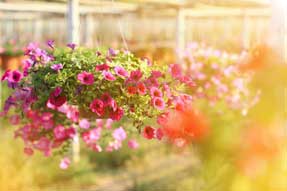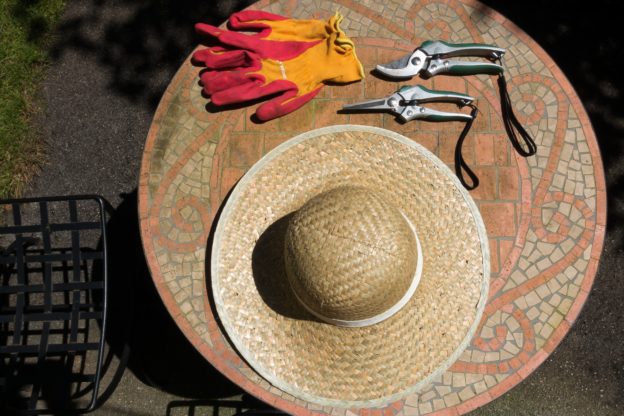The low down on the high up – hanging baskets!
Hanging baskets are a fail-safe way to bring bursts of colour to an otherwise dull wall, or a perfect way to incorporate flowers and greenery when you are pushed for space. With the help of a greenhouse, April is the best time to start planting a hanging basket so that it has reached full flower coverage by the summer months. If you won’t be able to use a greenhouse, it may be best to hold off a little while or cover your basket with horticultural fleece when there is a risk of frost.
How to plant a hanging basket
- Choose your basket; we have a large range of baskets in store, which range in shape, size, lining and price.
- Chose your plants (read ahead to get a feel for the right kind of plants), buy them and make sure that they are well watered before planting.
- Unhook the basket’s chain and line the basket. Lining is a personal preference; we have some amazing natural linings in store made from recycled plant fibres, alternatively a thick layer of moss would also work. Make sure the lining fits the basket nicely and cut off any material above the rim of the basket.
- Place a saucer at the bottom of the basket after lining all over; this will help to retain moisture.
- Before filling the basket with compost, if you have chosen a solid lining make sure to slash some holes /slits appropriately around the basket in order to push the trailing plants through to cover the sides of the basket (if the basket is deep enough you may be able to fit two layers of these). Once you have done this you can half fill the basket with compost (until the compost is level with the first set of slits, we recommend using John Innes no 2 which can be purchased from both of our stores) or a moisture retaining compost like the one from Miracle Gro.
- Next plant the trailing plants. These should be planted from the inside outwards to protect the roots, settling them so that the root ball is laying on top of the compost and the foliage is outside of the basket. For the trailing plants we recommend you move around the basket alternating between foliage plants like helichrysums and trailing flowering plants like petunias.
- Once all of the slits have been filled, tease out the roots of the plants and add more compost to work around the roots, almost filling the basket. More trailing plants can be planted around the rim of the basket; maybe try geraniums or lobelias.
- Now that preparation for the sides of the basket is complete, you can move onto the centre. What you plant here is completely optional depending on the style and colours you are aiming for. Whichever flowers you chose, you should angle them outwards to create the effect of layering.
- Make sure any gaps left over are filled with compost.
- Water your basket thoroughly and stand it in your greenhouse to grow. Without a greenhouse either delay planting for a few more weeks, or protect from frost.
Basket and pot bedding plants are now available from our garden centre (Sidmouth Road, Clyst St Mary, Exeter, EX5 1AE).











